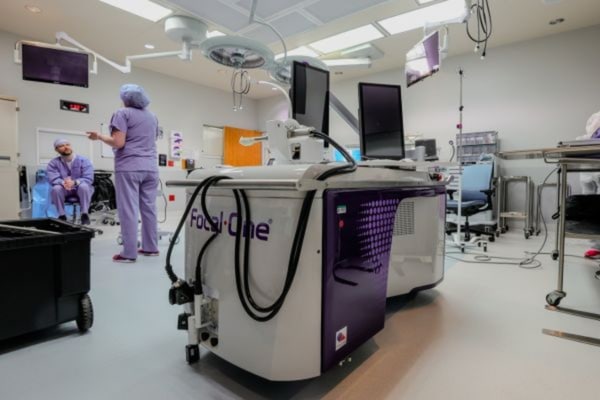The bombshell news that former President Joe Biden was diagnosed with stage 4 prostate cancer highlights the importance of screening for a disease that, when caught early, is more treatable than ever before.
“Avoiding that worst-case scenario, where the cancer has spread, really comes down to screening, timely diagnosis, and treatment,” says Srinath Kotamarti, MD, urologist and urologic oncologist on the medical staff at Methodist Charlton Medical Center. “Screening allows us to identify at-risk patients.”
That’s good news for more than 300,000 American men diagnosed with prostate cancer each year. The bad news: About 1 in 8 men will be diagnosed with the disease in their lifetime, and the incidence rate for prostate cancer has grown 3% each year since 2014, according to the American Cancer Society.
The screening process begins with a periodic prostate specific antigen (PSA) blood test, which ideally starts at age 45 for patients at an average risk. Those at higher risk should begin screening at 40, including anyone with certain genetic mutations or a family history of prostate cancer, as well as Black men, who are disproportionately affected by the disease, Dr. Kotamarti says.
“How often you get screened is a decision between you and your doctor,” he adds. “We typically stop recommending routine screening by age 75.”

NO SYMPTOMS AT FIRST
What makes prostate cancer so difficult to diagnose at its earliest stages is that symptoms rarely appear until the disease is advanced, Dr. Kotamarti says.
“If a tumor within the prostate has grown large, it could cause obstruction of urine or bleeding, for example,” he explains. “If the cancer has spread beyond the prostate, there could be symptoms associated with where the spread occurs, such as pain in a bone from a metastasis to that bone.”
That’s the case with Biden, whose cancer has spread, or metastasized, to his bones. Avoiding such a late-stage diagnosis is where screening and timely treatment play a critical role.
At Methodist, we don’t just focus on your cancer. We care for you as a whole person.
Learn more at MethodistHealthSystem.org
After diagnosis, there are a host of management options, from hormonal therapy – which uses medication in the form of shots and pills to starve the tumor of the testosterone it feeds on – to radiation and surgery to remove the prostate. For certain lower risk prostate cancers, an “active surveillance” approach without treatment and with only close monitoring can be employed.
“A cure is often possible,” Dr. Kotamarti says, “but the problem with prostate removal surgery and radiation is the debilitating side effects that can profoundly alter a man’s life.”
As a result, patients seeking an immediate remedy for their cancer would also endure the severe complications of those treatments, including erectile dysfunction and incontinence, as well as the associated mental and emotional toll.
Dr. Kotamarti says there are cases in which these radical therapies may even be considered as overtreatment. Radiation and removing the prostate aren’t the only options, however, and some patients may be a candidate for a minimally invasive alternative that he and his colleagues at Methodist Charlton just added to their toolbox.

HIFU AND ABLATION
The prostate is in a location that makes it extremely challenging to access without affecting the surrounding organs, especially when it comes to ablation — a treatment that uses heat, cold, or another energy to destroy cancer cells.
New technologies like the Focal One HIFU Robotic System, which uses ultrasound energy to kill the cancer, give doctors the precision they need when treating prostate cancer with ablation.
“Focal therapy using HIFU allows me to focus on the cancer while sparing the rest of the prostate and the intimately surrounding critical structures,” Dr. Kotamarti says. “It allows for precise and effective treatment for the right patient.”
This outpatient procedure can be performed in as little as 45 minutes, with the patient comfortably asleep while a probe ablates the cancer using ultrasound placed into the rectum.
“It truly provides the optimal balance between a quality outcome and good quality of life, expanding the possibilities for a man diagnosed with prostate cancer,” Dr. Kotamarti says.






